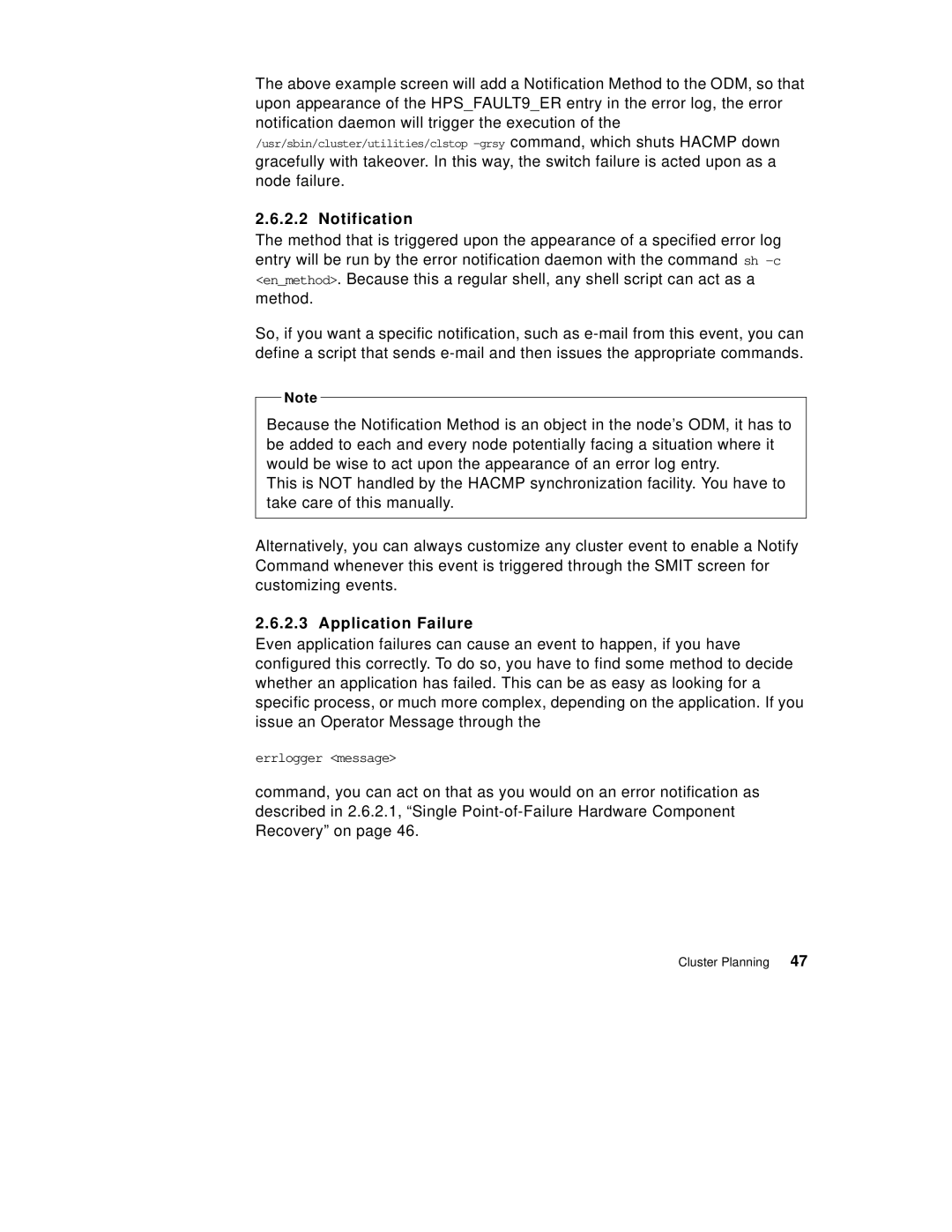
The above example screen will add a Notification Method to the ODM, so that upon appearance of the HPS_FAULT9_ER entry in the error log, the error notification daemon will trigger the execution of the
/usr/sbin/cluster/utilities/clstop
gracefully with takeover. In this way, the switch failure is acted upon as a node failure.
2.6.2.2 Notification
The method that is triggered upon the appearance of a specified error log entry will be run by the error notification daemon with the command sh
So, if you want a specific notification, such as
Note
Because the Notification Method is an object in the node’s ODM, it has to be added to each and every node potentially facing a situation where it would be wise to act upon the appearance of an error log entry.
This is NOT handled by the HACMP synchronization facility. You have to take care of this manually.
Alternatively, you can always customize any cluster event to enable a Notify Command whenever this event is triggered through the SMIT screen for customizing events.
2.6.2.3 Application Failure
Even application failures can cause an event to happen, if you have configured this correctly. To do so, you have to find some method to decide whether an application has failed. This can be as easy as looking for a specific process, or much more complex, depending on the application. If you issue an Operator Message through the
errlogger <message>
command, you can act on that as you would on an error notification as described in 2.6.2.1, “Single
